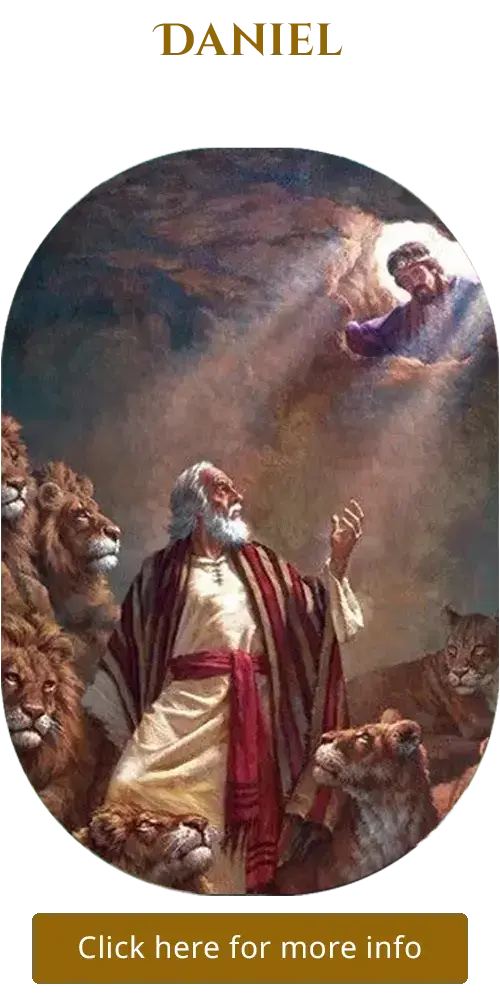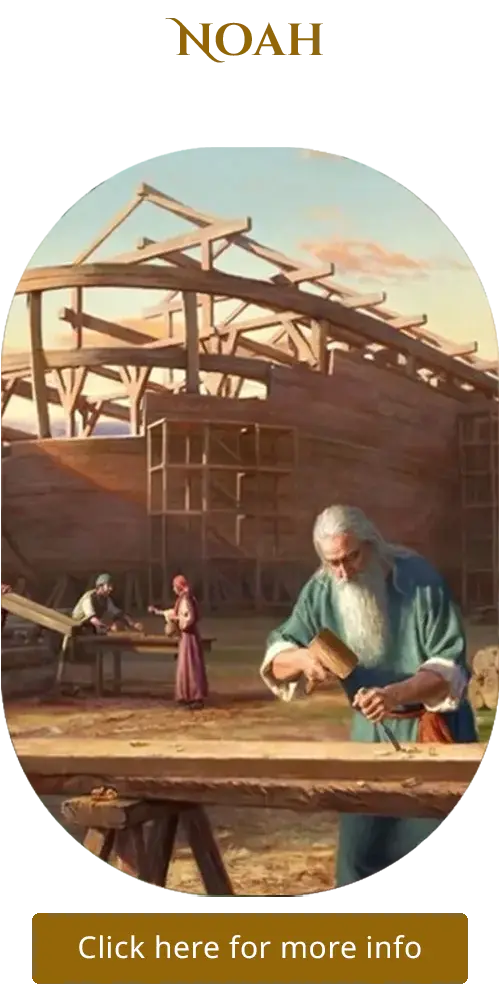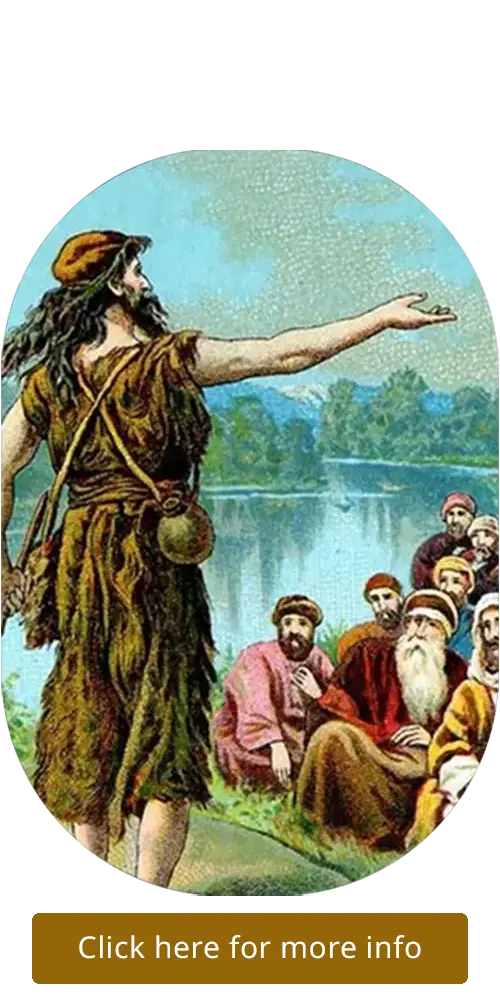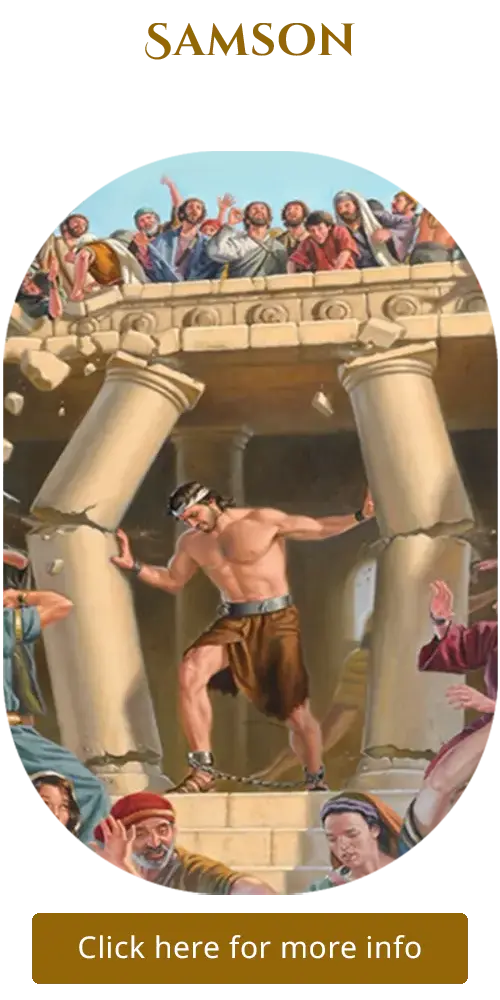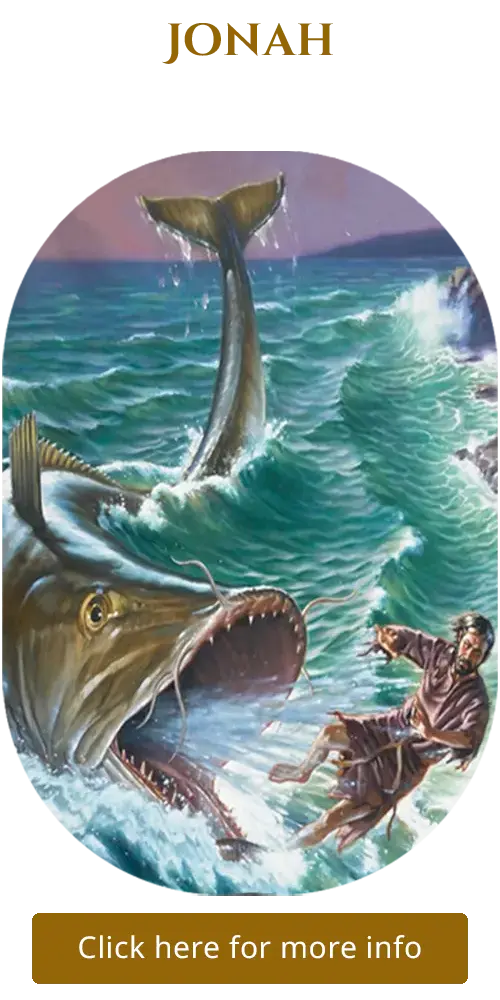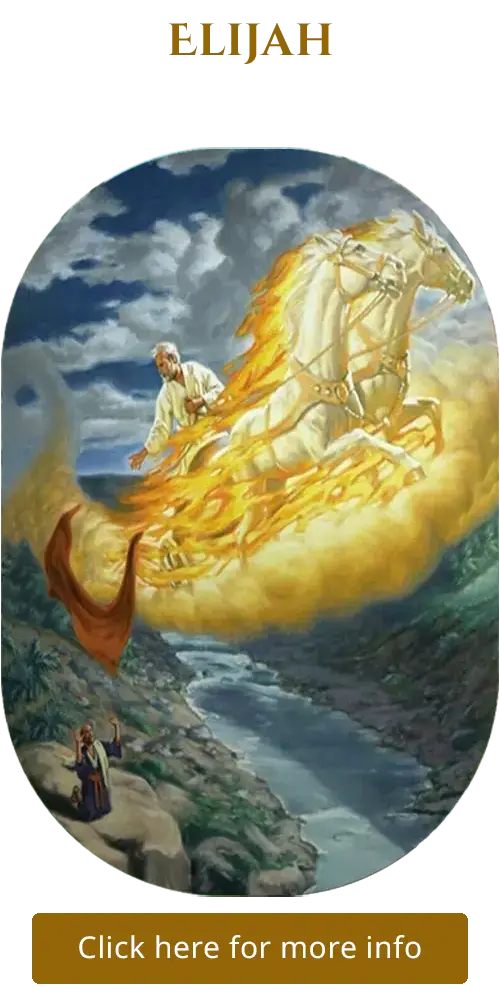St. Barthlomew
Outside Paintings - South Wall
Noah: The Righteous Patriarch and Builder of the Ark
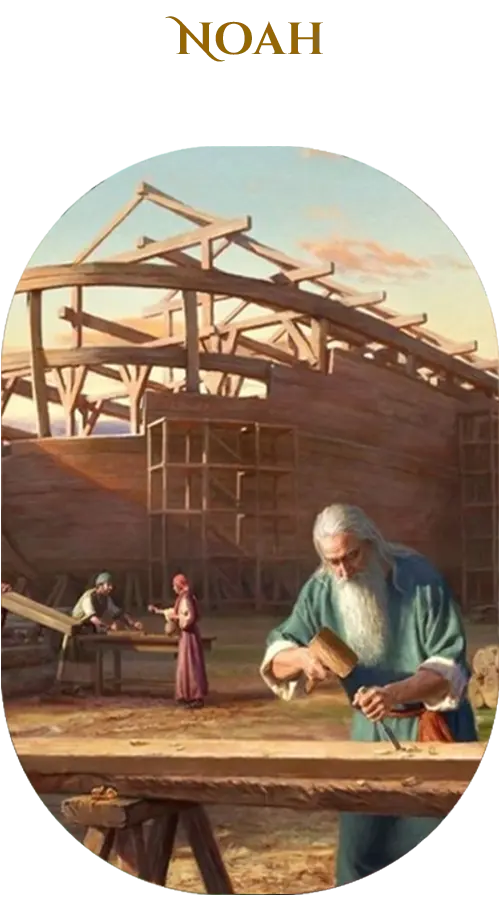
 |
 |
|---|
Reference: Genesis 5:28–9:29
Background and Character: Noah, a descendant of Adam through Seth, was born to Lamech and lived in a time when humanity had grown corrupt, filled with violence and sin. The Bible describes Noah as “a righteous man, blameless among the people of his time,” who “walked faithfully with God”. He was a father to three sons – Shem, Ham, and Japheth – and lived to the age of 950 years. His righteousness set him apart, earning God’s favor in a world deemed worthy of destruction.
God’s Judgment and the Ark: God, seeing humanity’s wickedness, decided to send a flood to destroy all life but chose to spare Noah and his family. He instructed Noah to build an ark of gopher wood, with specific dimensions: 300 cubits long, 50 cubits wide, and 30 cubits high (roughly 450x75x45 feet, assuming a cubit of 18 inches). The ark was to have three decks, a door, and a roof opening for light and air. Noah was to bring his wife, his sons, their wives, and representatives of every land animal and bird – seven pairs of clean animals and birds, and one pair of unclean animals – to preserve life through the flood. Noah obeyed God’s command meticulously, building the ark despite the absence of prior floods in the narrative.
The Great Flood: When Noah was 600 years old, God commanded him to enter the ark with his family and the animals. The flood began with rain for 40 days and nights, and waters surged from “the fountains of the great deep”. The floodwaters covered the earth, submerging even the highest mountains, and all life outside the ark perished. The waters prevailed for 150 days, underscoring the cataclysm’s scale.
The Flood Recedes and Noah’s Response: God sent a wind to dry the earth, and the waters gradually receded. The ark came to rest on the mountains of Ararat. Noah sent out a raven and then a dove to check for dry land; the dove’s return with an olive leaf signaled the waters’ retreat. After about a year in the ark, Noah and his family emerged when God declared the earth dry. Noah’s first act was to build an altar and offer sacrifices of clean animals, pleasing God.
God’s Covenant and the Rainbow: In response to Noah’s sacrifice, God promised never again to destroy the earth with a flood, establishing a covenant with Noah and all living creatures. The rainbow was set as a sign of this covenant, symbolizing God’s mercy and commitment to preserve life. God also blessed Noah and his sons, instructing them to “be fruitful and multiply” to repopulate the earth, and granted humanity dominion over animals, with permission to eat meat (but not blood).
Noah’s Later Life and the Curse of Ham: Noah became a farmer and planted a vineyard. Noah drank wine, became drunk, and lay uncovered in his tent. Ham, “the father of Canaan,” saw his father’s nakedness and told his brothers. Shem and Japheth walked backward and covered Noah without looking. When Noah awoke and learned what Ham had done, he cursed Ham’s son Canaan to be “the lowest of servants” to his brothers, while blessing Shem and Japheth, praying that Canaan would serve them. Noah lived another 350 years after the flood, dying at 950.
Noah’s story reminds Orthodox Christians that, in the midst of corruption, one righteous soul, obedient to God, can be an instrument of preservation and hope. His example calls believers to live righteously, trust in God’s providence, and find refuge in the Church, the ark of salvation, pointing to Christ, who delivers humanity from the flood of sin and death.

